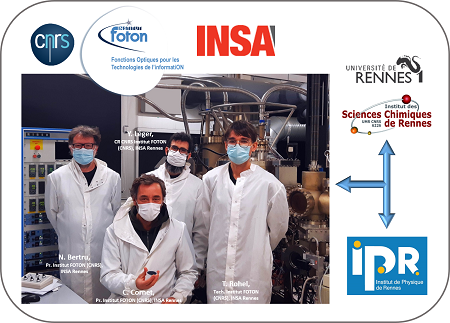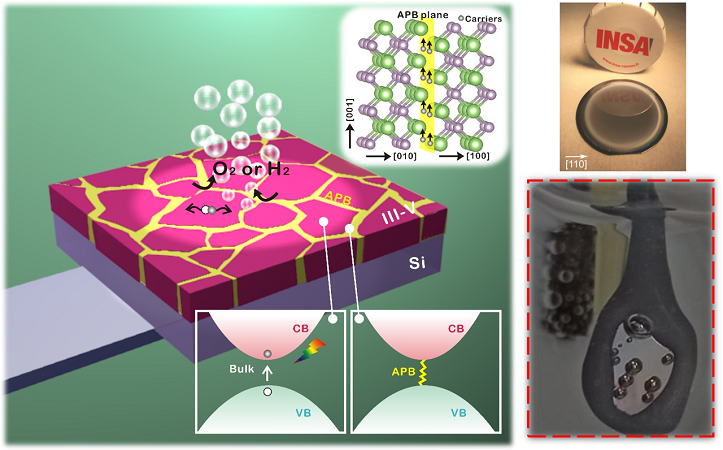One possibility is to use solar energy directly to produce hydrogen from water in photo-electro-chemical cells. This is the approach chosen by a team of scientists from Rennes, grouped around Charles CORNET,Nicolas BERTRU et Yoan LÉGER (Institut FOTON) and Gabriel LOGET and Bruno FABRE (ISCR), and in collaboration with members of the IPR. In the work which has just been published in the prestigious journal “ Advanced Science ”, the Rennes team proposes to use a new family of materials with quite astonishing photoelectric properties to produce solar hydrogen efficiently, at low cost and with a low environmental impact. This proposal is accompanied by several demonstrations of photoelectrodes operating under solar illumination.
 A consortium originating from Rennes (France)
A consortium originating from Rennes (France)III-V semiconductors are materials well-known for their very good optical properties, and are therefore used in a wide range of applications, from laser emitters and optical sensors, to photovoltaic solar cells. The authors of this work show not only that their integration on a silicon substrate makes it possible to drastically reduce the manufacturing costs of these materials, but that it also gives them remarkable and unprecedented physical properties. In particular, they demonstrate the presence of 2D singularities at the atomic scale, with a semi-metallic character in the material, which allows it to be both photoactive (absorption of light and conversion into electric charges), and locally metallic (very anisotropic transport of electric charges). More surprisingly, the material can drive both positive and negative charges (ambipolar character), and singularities have topological properties. In this work, a proof of concept is presented through the realization of several III-V / Si photoelectrodes for the production of solar hydrogen, but the use of this material could also be very interesting for many other applications in the field of energy (solar cells), sensors, photonics, electronics, and quantum computing.
 Scientists from Rennes discovered a new class of materials able to both absorb the light like a solar cell and behave as a metal, enabling solar hydrogen renewable production
Scientists from Rennes discovered a new class of materials able to both absorb the light like a solar cell and behave as a metal, enabling solar hydrogen renewable production
 Charles CORNET Charles CORNET charles.cornet insa-rennes.fr charles.cornet insa-rennes.fr (+33) 2 23 23 83 99 (+33) 2 23 23 83 99 |
ISCR (Rennes, France), IPR (Rennes, France)
Epitaxial III–V/Si Vertical Heterostructures with Hybrid 2D‐Semimetal/Semiconductor Ambipolar and Photoactive Properties, L. Chen, Y. Léger, G. Loget, M. Piriyev, I. Jadli, S. Tricot, T. Rohel, R. Bernard, A. Beck, J. Le Pouliquen, P. Turban, P. Schieffer, C. Levallois, B. Fabre, L. Pedesseau, J. Even, N. Bertru, C. Cornet Adv. Sci. 2021, hal-03426793

































